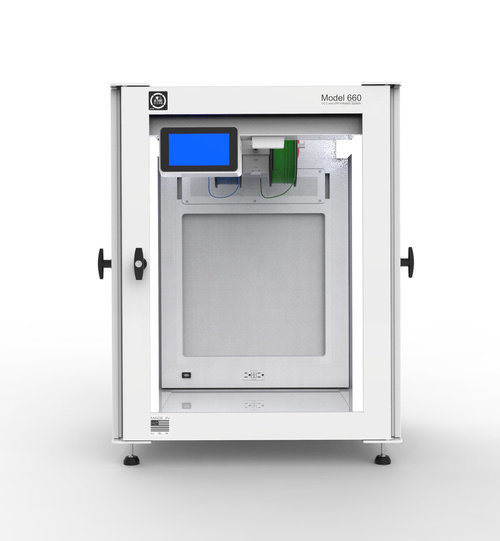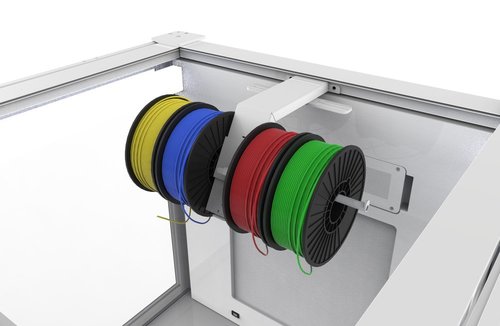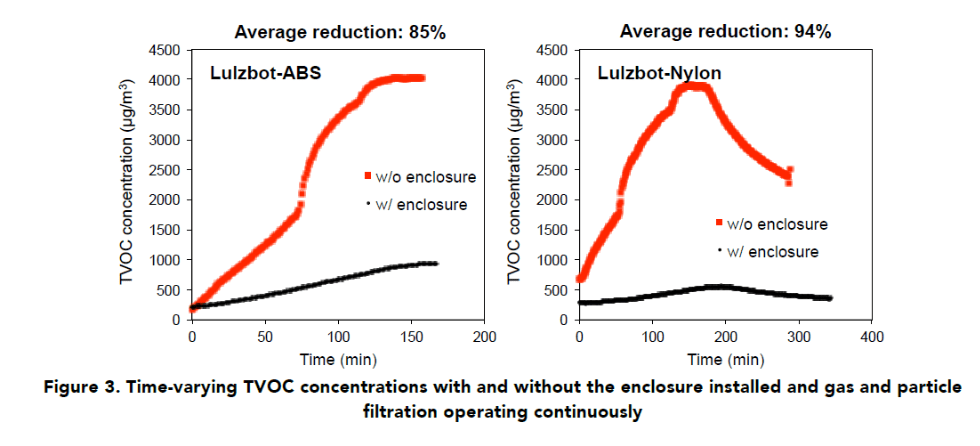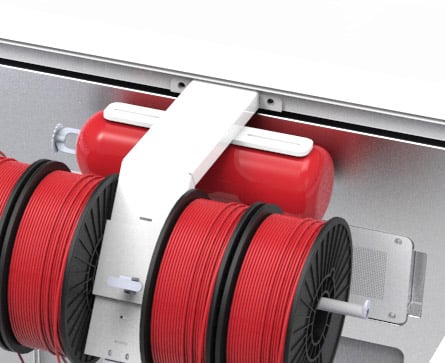
We’ve often written on the topic of 3D printing safety, and there are few other solutions that do as much as 3DPrintClean’s.
The New Jersey-based company produces a line of specialized enclosures for desktop 3D printers. The basic ideas was to seal up the air volume around the printer and filter out nasty particles, but in reality the enclosure acts as a platform for a wide variety of important functions not typically provided on a basic desktop 3D printer.
We’ve written about the company previously, as they introduced the concept back in 2015. Then the basic enclosure models were priced at USD$700-1200. In 2016 the company introduced an interesting, low cost “tent” style product priced at only USD$399, but that product seems to no longer appear on their current list of products.
And that current list of products is in fact their new Model 3 series, now shipping. These enclosures are somewhat more expensive than 3DPrintClean’s previous models, but they are far, far more capable and functional.
There are two models, the 660 and the 870, which seem to differ only in internal volume size and price; otherwise they include the same features and options.

Model 3 units include features in the company’s previous products, including the ability to detect excessive heat and shut down power if so, ensure consistent heat within the enclosed volume, hold spools of material in a consistent environment and optionally provide fire suppression if detected.
But the key feature retained is, of course, the ability to filter out potentially nasty emissions from printing materials. When materials are heated they tend to give off volumes of ultra fine particles, or UFP’s. In addition there are also volatile organic compounds, VOC’s, emitted depending on the type of material.
These particles are so small they are not captured by standard HEPA filters, which are sometimes used in desktop 3D printers and touted as a means to make the machines safe. Activated carbon filters are similar: they may remove some odor, but they don’t do anything about tiny particles that may lodge in your lungs for potentially long term effects.

3DPrintClean has devised a filtration system that removes a very large percentage of the UFPs and VOCs, as you can see in this chart. It’s not perfect, but it’s about the best you can get, short of wholesale evacuation of the 3D print area to exterior ventilation.
But there’s more to the story, as the 3DPrintClean platform can be used for a number of other interesting uses:
Humidity control: the enclosure includes a dehumidifying cartridge, making it an ideal “cabinet” to store your 3D printer filament. In fact, both units have the ability to install dual or quad-sized rods to store – and use – 3D printer filament.
Lighting: I mentioned previously they had a lighting system, which makes up for the often totally inadequate lighting subsystems on many desktop 3D printers. The lack of light makes it rather difficult to properly monitor print progress through video via an accessory set-top box system. The Model 3 series provides a huge 2400 lumens (that’s like a 160W incandescent light bulb) of illumination, and it’s actually dimmable, too.
System Control: The Model 3 series includes a 7” touchscreen showing system status, including an on board camera, temperatures, etc. All of this is also hooked up to WiFi, which permits online software updates to the system.
Door Control: The Model 3 series doors are now intelligent, as they include sensors. This enables the system to shut down the filtration when the doors are open, as well as lock them. This incidentally results in a modicum of theft prevention, as the perp would have to break through the doors to get at the possibly valuable 3D printer inside.
Total Seal: To be functional, particularly to control the ridiculously small UFPs, the system is obviously meticulously sealed. But then how do you access your 3D printer inside by network? The solution is that the Model 3 series includes a USB pass-through, enabling you to easily plug in your laptop or set-top box without compromising the seal.
For those who must operate desktop 3D printers indoors without the possibility of exterior ventilation, the Model 3 series should be on your list of accessories, if only for safety reasons.
Pricing for the two units is premium, and in some cases may be more than the price of the printer inside. The model 660, which provides a 600 x 810 x 600mm internal volume, is USD$2,695, while the larger model 870 provides 810 x 810 x 810mm internal volume at a price of USD$2,995.

That’s not quite all you’ll spend, as there are some other accessories you likely require:
- Fire suppression system (basically a standard fire extinguisher designed to fit inside): USD$300
- Stand or Cabinet: up to USD$1,395
- Spool holders: up to USD$125
- Fire insurance (to replace unit if your 3D printer burns the enclosure): USD$199
And there are annual costs as well. The fancy UFP/VOC filters last one year and cost USD$300 each, and the dehumidifying cartridge, which lasts a variable amount of time, costs USD$100.
But what price is safety?
Via 3DPrintClean

